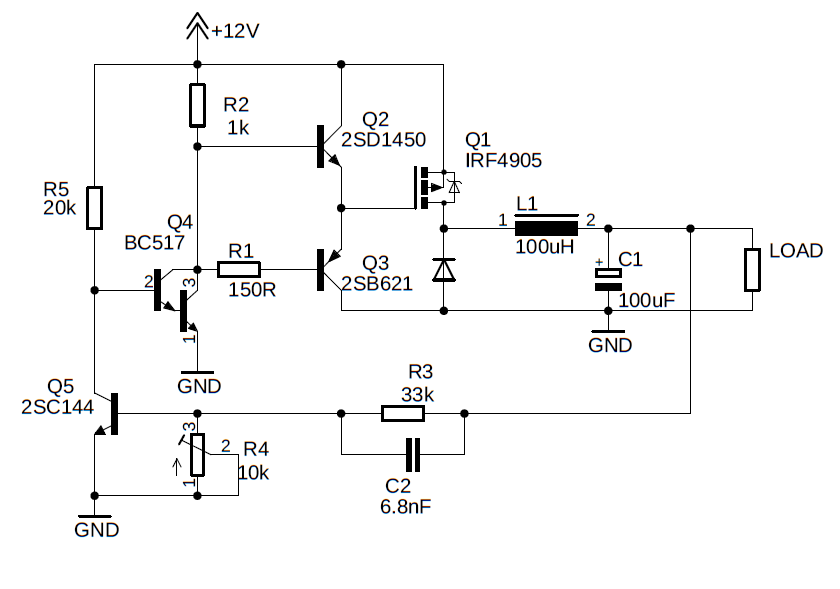I tried to build a buck converter without any ICs, just transistors, a diode and passive components. Its purpose is to convert 12V to 5V at 2 Amps. It works, but the switching MOSFET (IRF4905) heats up very quickly and I can't figure out exactly what the issue is.
The idea was to build a sort of hysteretic buck converter. R3 and the trimmer R4 form a voltage divider, when the voltage across R4 is high enough (about 0.7V), Q5 opens and closes Q4, which closes the MOSFET. If the voltage on the output is too low, the MOSFET is open.
It regulates the voltage, but it heats up very quickly at 2A. I measured the switching frequency to be about 42kHz. I suspect that the MOSFET is not opening and closing fast enough, or not opening and closing completely. I can't verify that because I don't have an oscilloscope.
List of things I tried:
- Decreasing/increasing frequency by changing C2.
- Increasing inductance L1 to ~280uH.
- Adding a 1k resistor from the MOSFET gate to +12V.
- Adding 100nF and 4.7uF capacitors between Vcc and GND near the totem pole.
Does anyone know what could cause the MOSFET to heat up? Any suggestions would be appreciated.


